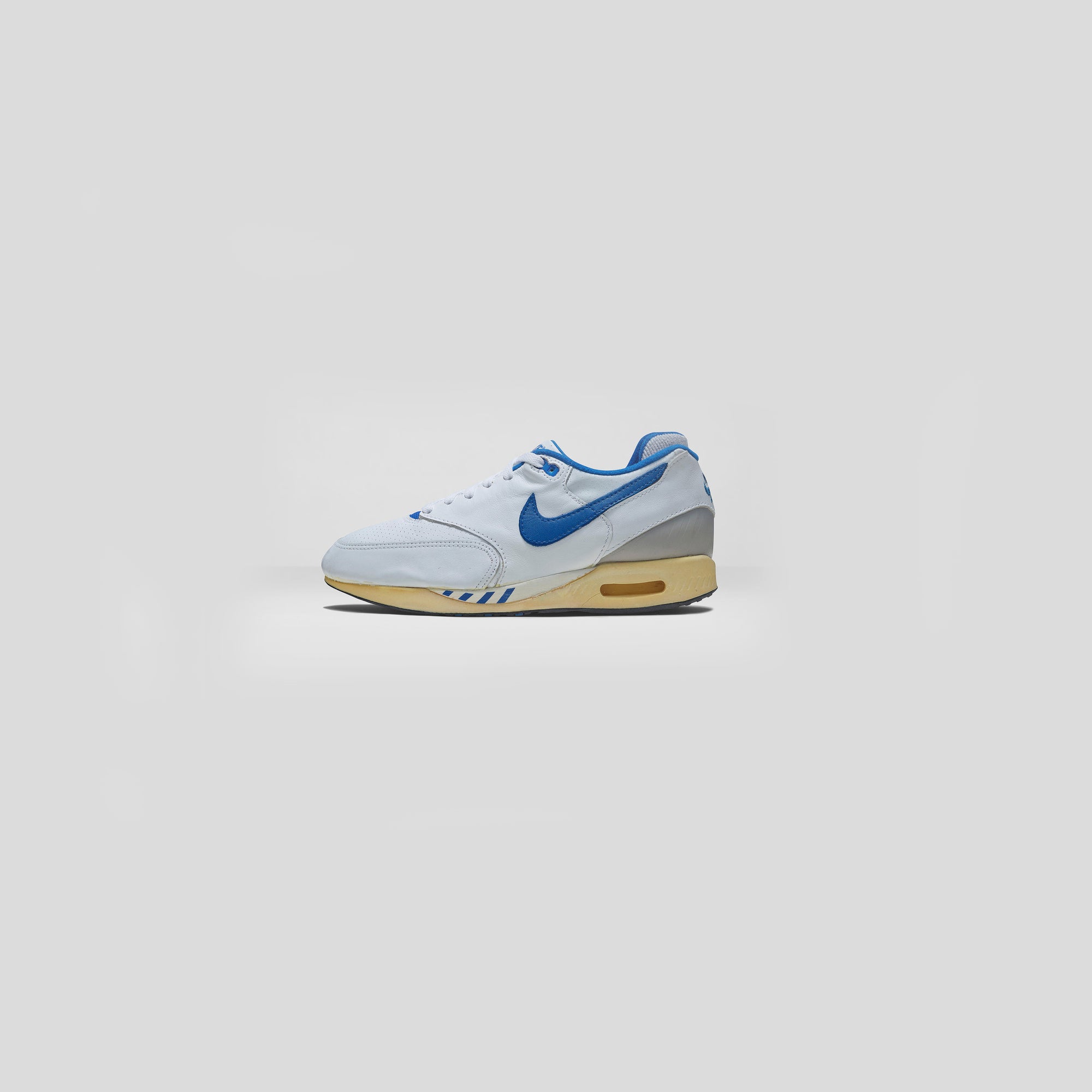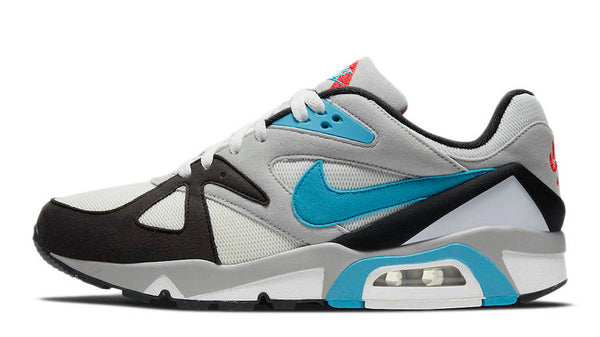
May 08, 2022 by Joey Birch
10 Best Obscure Nike Silhouettes
2022 celebrates 50 years of Nike. Originally starting its life as Blue Ribbon Sports, the Swoosh has come a long way since its founder, Phil Knight, worked alongside Onitsuka Tiger. While the brand is responsible for releasing some of the greatest sneakers of all time including the Air Jordan 1 and Air Max 90, they also have a huge catalogue of lesser known silhouettes that you might find on Instagram accounts like Archive DNA (@archive.dna).

Air Walker Max, 1988
While initial Air Max releases were crafted for runners, the Air Walker Max was, as the name suggests, made for walking. Taking the Air Max 1 silhouette and adding further support was the key to its design. Featuring a double interior heel support, thick leather upper similar to that on the Air Revolution as well as a perforated toebox.
Releasing in an OG white and blue colourway, the sneaker has never seen a retro since its release, unlike its Air Max 1 and 90 counterparts.

Air Max 93, 1993
The Air Max 93 is, in both looks and technology terms, an incredible sneaker. Tinker Hatfield was able to push the boundaries with the AM 93 using the silhouette to introduce a 270 Air Unit within the heel.
Reminiscent of the Huarache, the sock liner blends seamlessly into the upper and hugs the ankle with a mudguard that also flows into the upper of the shoe, as with the AM 90 3 years prior. Releasing in the OG ‘Dusty Cactus’, also known as the Menthol colourway, the 93s have been retroed a couple of times since its release with the latest being in 2018. Yet the sneaker still doesn’t get the recognition it deserves in the Air Max conversation.

Air Epic, 1985
The Air Epic was another performance running sneaker by Nike that utilised Nike Air technology in the midsole, despite not being visible. The key design feature that set the Air Epic apart from other Nike silhouettes, is the perforated 3M heel panel which was the first time 3M had ever been used on a sneaker. A feature that has since become a mainstay, with examples including the Air Max 97.
The Epic has since been revisited in the form of the Nike Epic React, taking the upper of the OG Epic and pairing it with the React midsole to create a more modern running model.

Zoom Terra Sertig, 1997
Released in 1997, the Zoom Terra Sertig brought Nike’s ACG and Air Max lines together. Featuring a rugged, hightop, leather upper in conjunction with mesh panelling and bold Nike branding - the sneaker sat upon a full-length Air Unit in the midsole which is more reminiscent of the Air Max 360 in some ways than the Air Max 97 with the enlarged Unit.
The OG colourway of the sneaker was a classic, leading it to become an instant hit both on the trails and the streets. Since its original release in ‘97, the Terra Sertig hasn’t completely disappeared. Being re-released with a new design in 2012, 2016 and 2017 each time featuring new design features.
However, it’s the OG silhouette that holds the number 1 spot.

Air Footscape, 1996
Developed in Nike's Sports Research Lab with the Advanced Product Engineering group, the Air Footscape was created by footwear designer and engineer Toren Orzeck (who was also responsible for the Air Moc, and developing Nike Foamposite technology). The sneaker's design was debuted after Toren proposed the idea of creating a 'Footform' shoe that was built around the shape of an individual's foot.
Every part of the sneaker was made to benefit the wearer, including the asymmetric lacing system that was created after the designer realised that the veins and arteries in the foot can be constricted when a sneaker is laced as well as a plastic cup support in the heel.
While the Footscape was revisited in different variants including the Air Stasis and Woven Footscape as well as through collaborations including Fragment in 2009, the silhouette has since seemed to be somewhat forgotten about within the slue of sneaker releases we see today.

Air Structure Triax, 1991
Another addition to the Nike Running catalogue, the Air Structure, as it was known upon its debut in 1991, was a sneaker produced to assist runners with an over-pronounced stride. Utilising a wider upper along with a flatter outsole, the sneaker is a classic for Air Max collectors and was retored in 2020 under the new name - Structure Triax 91.

Huarache Light, 1993
Two years after the Nike Huarache was released, the Huarache Light debuted. While the original design by Tinker Hatfield was inspired by a water skiing boot, featuring a sock-like upper within a caged unit, the Light included a mesh upper with a suede mudguard around the toe box.
Released in bright colourways, including the OG Aquamarine, the Light didn’t meet the same positive feedback that its regular predecessor did. Despite being rereleased in 2002 and 2014 in addition to a range of colourways and collaborations with the likes of Footpatrol and Stüssy, the silhouette is yet to be welcomed into the mainstream sneaker conversion.

Air Ship, 1984
Before the Air Jordan 1, was the Nike Air Ship. Worn by Michael Jordan upon first signing to Nike. Designed by the late Bruce Kilgore, the Air Ship would lead onto a sneaker that changed the game forever. Originally being released in an all leather white and red silhouette as well as the infamous Bred colourway, the Air Ship is widely forgotten in Jordan’s history.
Despite not being technically related, the Ships played a role in the popularity of the Air Jordan 1 after the black and red (Bred) colourway was featured in the Air Jordan 1 ‘Banned’ commercial.

Air Max 95 Zen Venti, 2007
For the record, this sneaker does not need to be brought back. Taking the widely beloved Air Max 95, Nike made a knee-high variant keeping the anatomically inspired design and stretching it over 16 lace loops. Released in three different colourways, including the OG ‘Neon’, little is known about why these were made.
While the OG Air Max 95 saw designer Sergio Lozano bring the first step towards a full-length Air Unit at the time, the Zen Venti opts for a 270 Air Unit in the heel instead.
![]()
Air Storm Beacon/Air Summer Beacon, 2004
The Nike Air Storm/Summer Beacon, at the time of release, were found in many outlet stores according to sneakerheads who remember their debut. Featuring an Air Max 180 style Air Unit in the heel, along with a light mesh, it's the pattern underneath the translucent upper that makes these so appealing.
The sneaker was a Europe and UK exclusive release that, as the name suggests, could be worn in any weather condition. While the silhouette was released in 2004, this looks like a shoe we could expect to see in 2030.
While we are always looking ahead at what the next greatest silhouette or release may be, the question still stands - is the best already behind us? and what can we learn from the past to bring into the present?